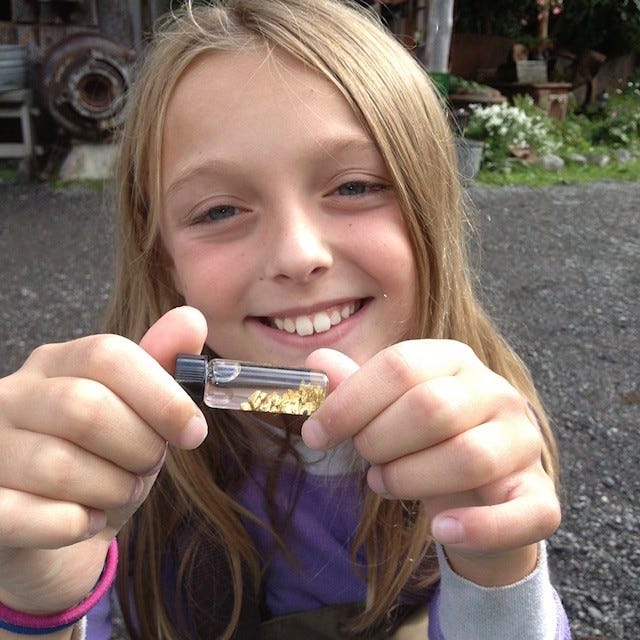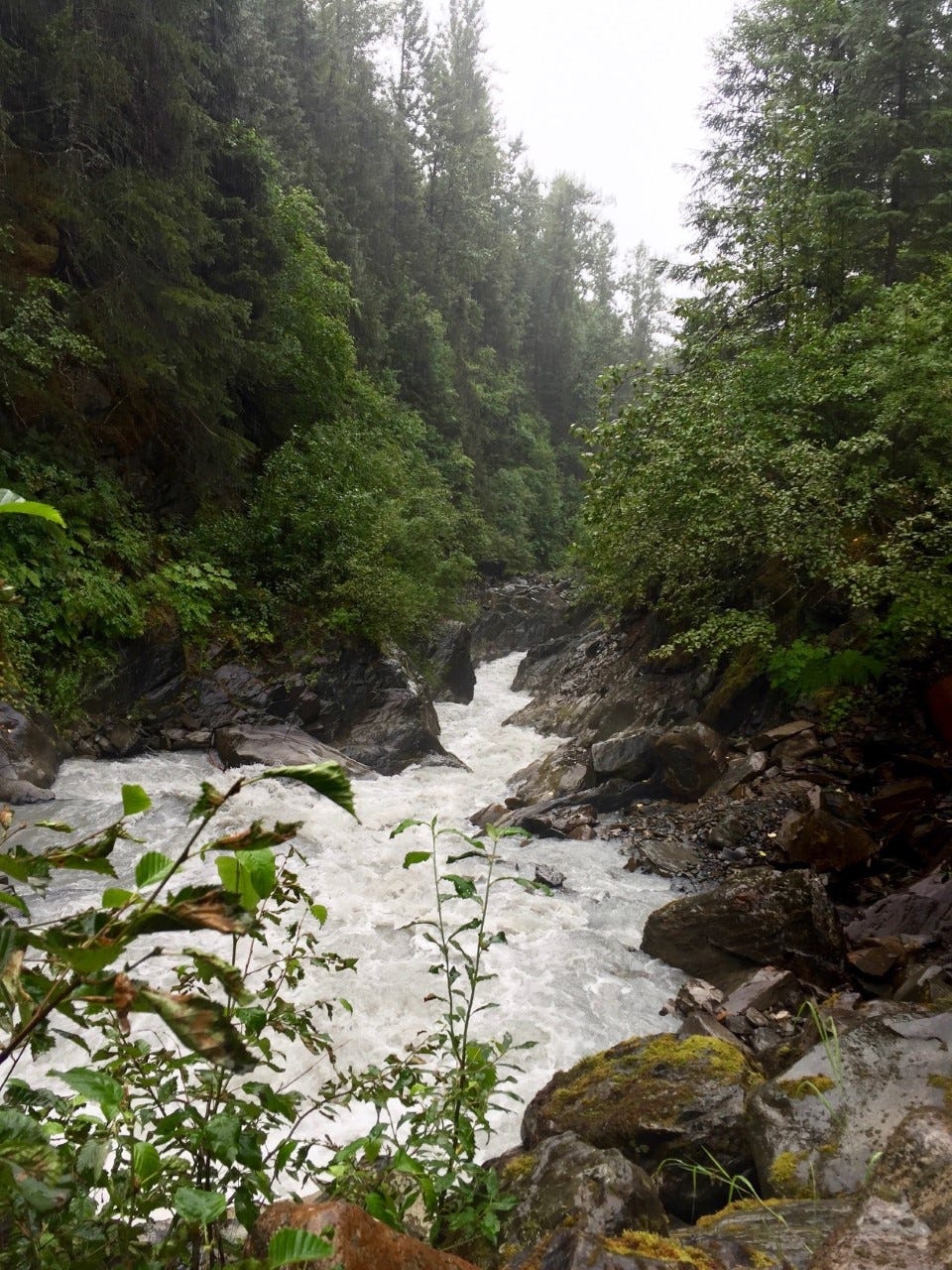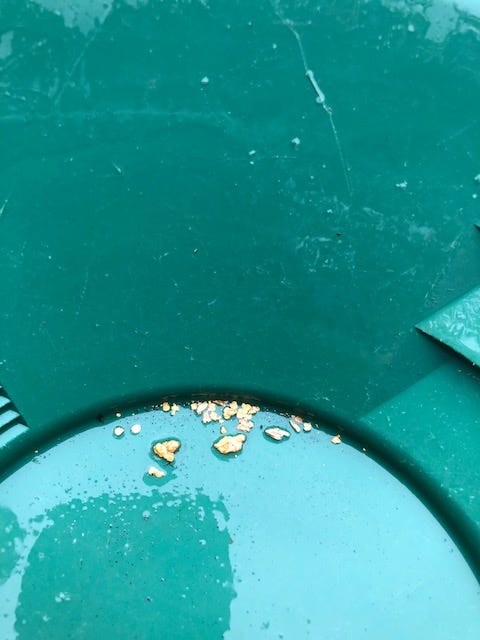It’s hard to describe the feeling of holding a real nugget of gold. Its shiny luster catches your eye and as a 9-year-old you can’t help but think it’s magical. This is how I felt when I mined a few nuggets of gold during my first summer in Alaska. Every summer my family and I go to Alaska to fish, hike, and explore the wilderness.
My first experience with gold mining there was when I was nine. After a bumpy drive, we arrived at a repurposed gold mine that offered small-scale mining and panning. The mine was active from the late 1800s and early 1900s. In its prime, it was highly productive, but the miners missed some gold which can still be found today.
We took a tour of the old wooden buildings and marveled at the old rusty mining equipment covering the property. The insides of the building were furnished with what the miners would’ve used in their daily lives and most of the artifacts were in great condition.
After touring the facility and the old buildings, our guide brought us down to the river and explained to us that we were digging material from the old riverbed, and from tailings piles left behind by the original miners. He handed us some shovels and buckets and we began to dig. I don’t remember how long we were digging for, but I know in my 9-year-old brain it felt like an eternity.
When each bucket was full, we dumped the dirt and rocks into the sluice box and powerful streams of water pumped up from the river washed the dirt from the rocks. The process we used was an updated version that the miners used one hundred years ago. After being rinsed off, the mud and water, which is called a slurry, continue down the ramp part of the sluice box, while the large rocks can be thrown out. This ramp has riffles and miners' moss that are designed to catch gold. Since gold is heavier than the rest of the sediment it sinks to the bottom and gets caught in the riffles.
The heavier gold will be at the top of the ramp because it sinks faster, and the lighter finer pieces of gold will be at the bottom of the ramp. We call the large pieces “pickers” because you can pick them up and hold them between your fingers and those are removed first after the whole process is finished. The miner's Moss is then soaked in a bucket of water and all the sediment is squeezed out. This material is then panned so that the gold can be separated from the other material. It is also important to check underneath the miner’s Moss because gold can get trapped there as well. Panning starts by starting with a good amount of material in the pan and swirling it around with some water. It is then dumped back into the water and the lighter sediment flows off the top while the riffles catch the heavier sediment including the gold. Eventually, there will only be a small amount of material left in the pan and this is when the gold will become visible.
After all the digging and hauling of buckets, we were left with a small amount of gold that we put in clear vials. We all shook the vial and listened to the sound of the metal chunks clank against the edges. If this was done on a much larger scale like on the show Gold Rush, then enough gold could be mined that it would be worth a significant amount of money.
While we did not get enough gold to be worth that much, it is worth the memories we made to pull it out of the ground, and I will always remember the work we put in to get our treasure.
Discussion about this post
No posts








